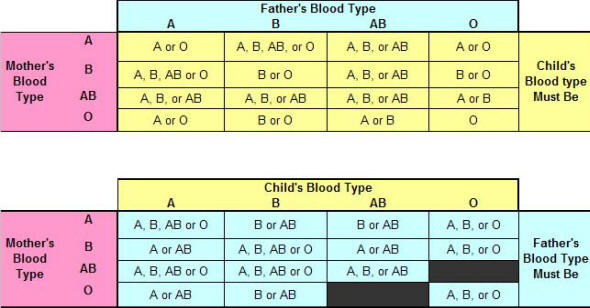Yes, according to the source I provided below, blood type can be used to determine paternity of an offspring. In fact, the ABO blood type charts below can be used to predict the possibilities of paternity.
The charts below can assist you to determine either:
1. The ABO blood type of the child when the blood type of the father and the mother are known (top chart), or
2. The ABO blood type of the father if the blood type of the child and the mother are known (bottom chart).
ABO Blood Type Calculator

ABO blood types can be complicated to understand. This is mostly due to the fact that the 'O-type' antigen is masked by the presence of an A- or B-type antigen. This is explained in the following chart, showing the different the genotypes that make up the blood types.
Genotype (DNA) Blood Type
AO or AA A blood type
AB AB blood type
BO or BB B blood type
OO O blood type
For example, two O blood type parents can produce a child with only O blood type. Two parents with A blood type can produce a child with either A or O blood types. Two parents with B blood type can produce a child with either B or O blood type. One parent with A and another with B can produce a child with A, B, AB or O blood types. If one parent has A and another has AB, they can either produce a child with A, B or AB blood types. If one parent has A and another has O, they can either produce a child with A or O blood types.